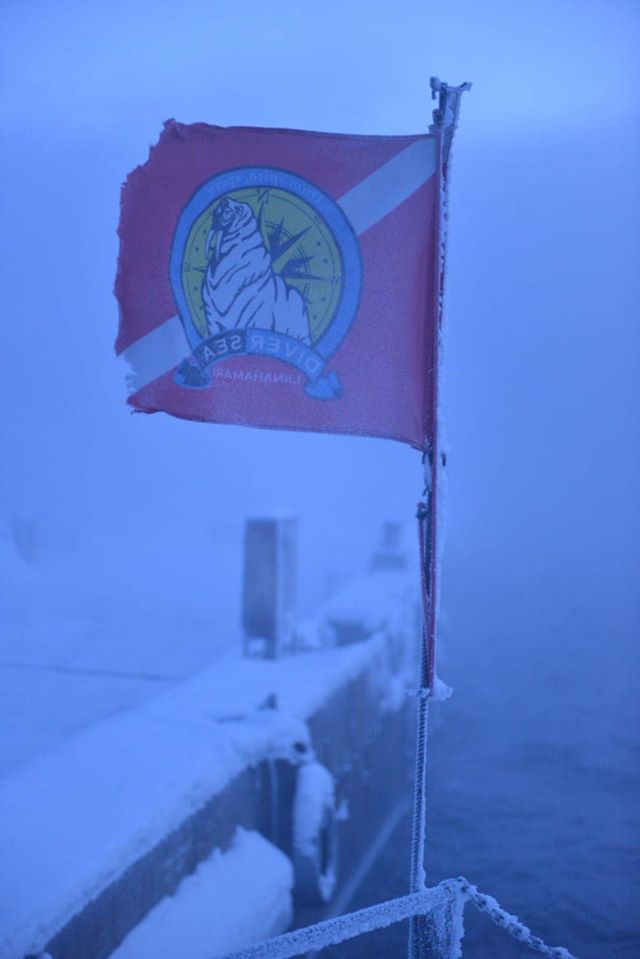A car journey to the Edge of the World.
Moscow → Liinakhamari
I have a kind of tradition to go on a trip to the southern coast of the Barents Sea in January. But this time it turned out to be unusual. The further we moved north, the warmer it became.
We stayed overnight at the edge of the forest 100 km from St. Petersburg. The temperature was +6°C (warmer than in the Crimea!) and two moths flew into our car, having spotted the light. That was fantastic!
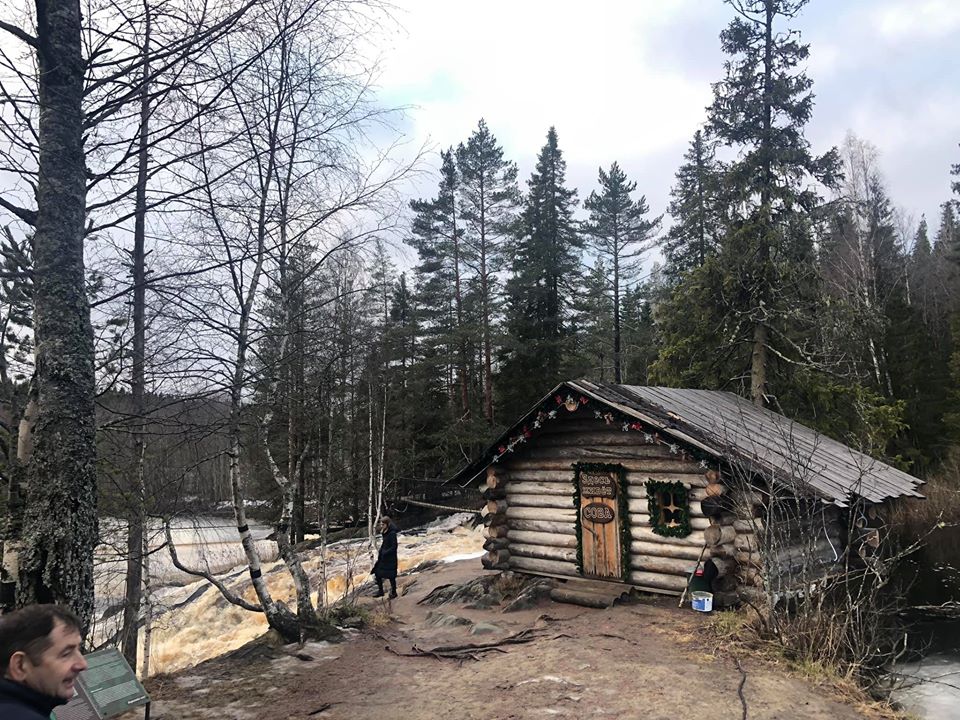
This time we decided to take a new route along the left bank of Ladoga through Priozersk and Sortavala, then along the border with Finland and make a stop at the popularised Ruskeala Nature Reserve
Did I like it? Of course, I did!
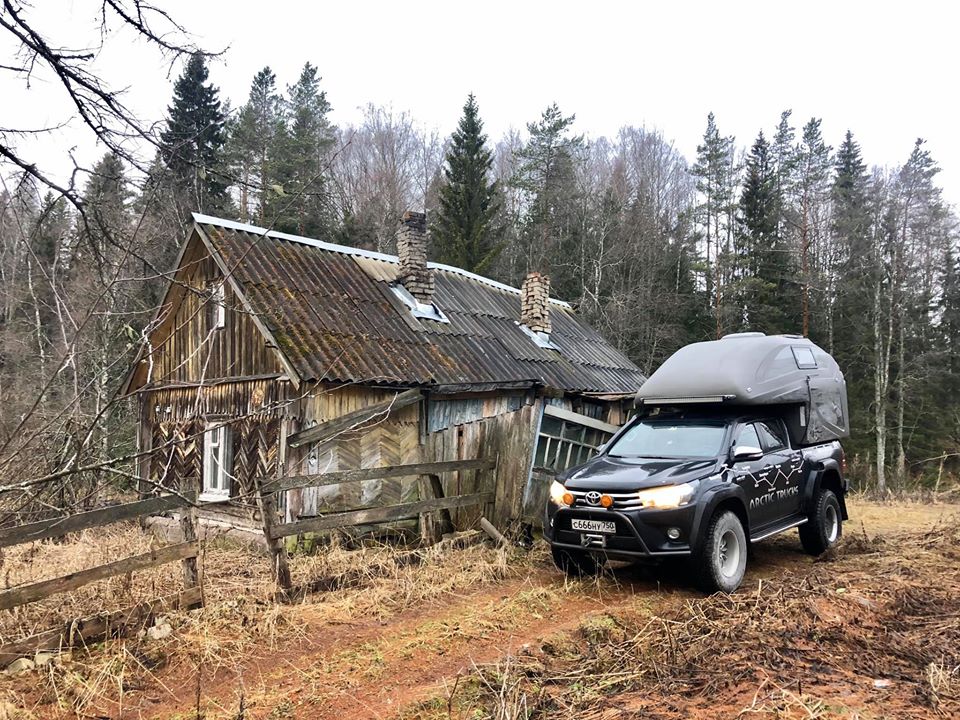
The track from St. Petersburg is absolutely gorgeous! Probably one of the most beautiful in Russia (and there are a few alike in Europe). I don't exaggerate it, be sure.
Ruskeala is a village near which there is a marble quarry, where marble had been mined for longer than a century and a half. St. Isaac's Cathedral in St. Petersburg, many underground stations and other famous architectural structures of the country were decorated with this marble.
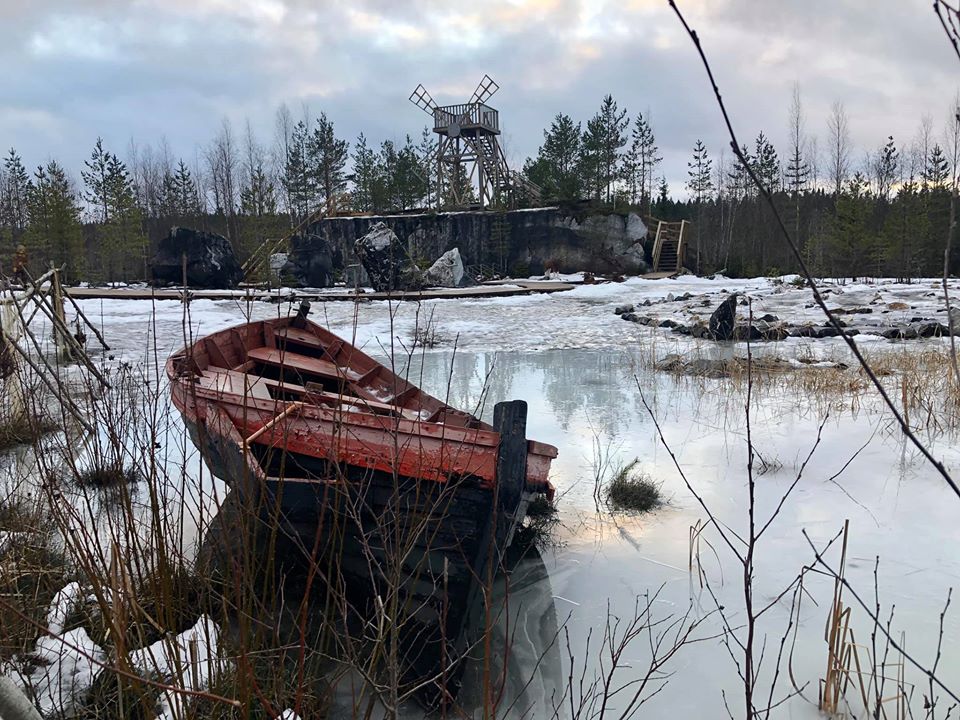
Now a contemporary Nature Reserve of amazing beauty with an unusual landscape has been created on the site of the quarry. There have been equipped the paths, which loomed between huge pine trees and led to the purest lake. You can see the marble rocks reflect in its mirror surface.
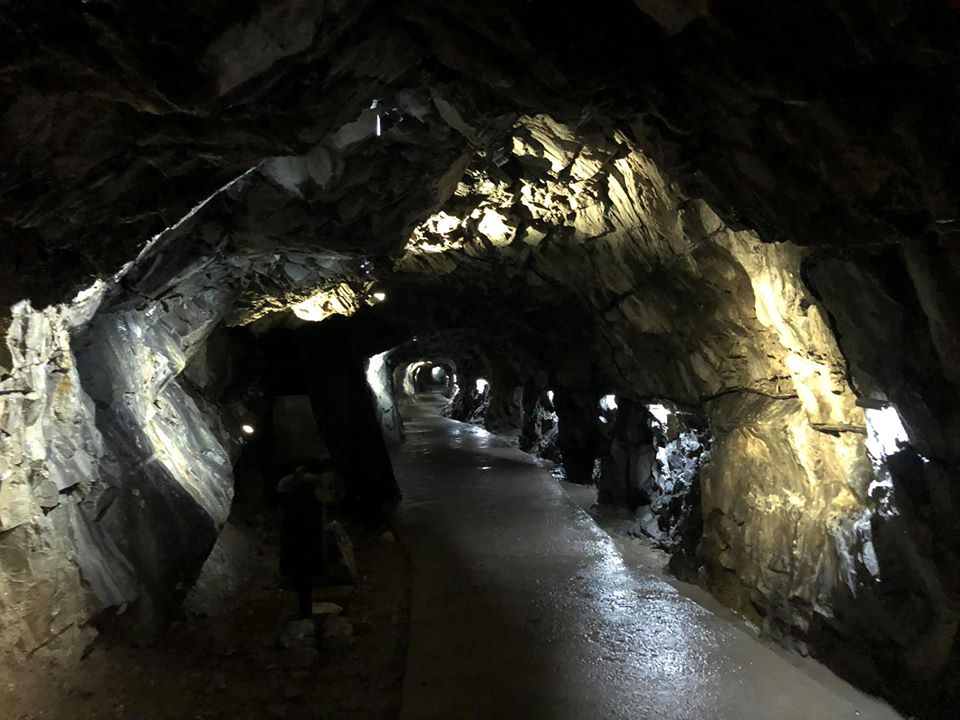
After sunset all this splendor is illuminated by multicolored spotlights and the forest becomes fabulous. You can take an excursion to the dungeon and wander through the tunnels, flooded mines and grottoes.
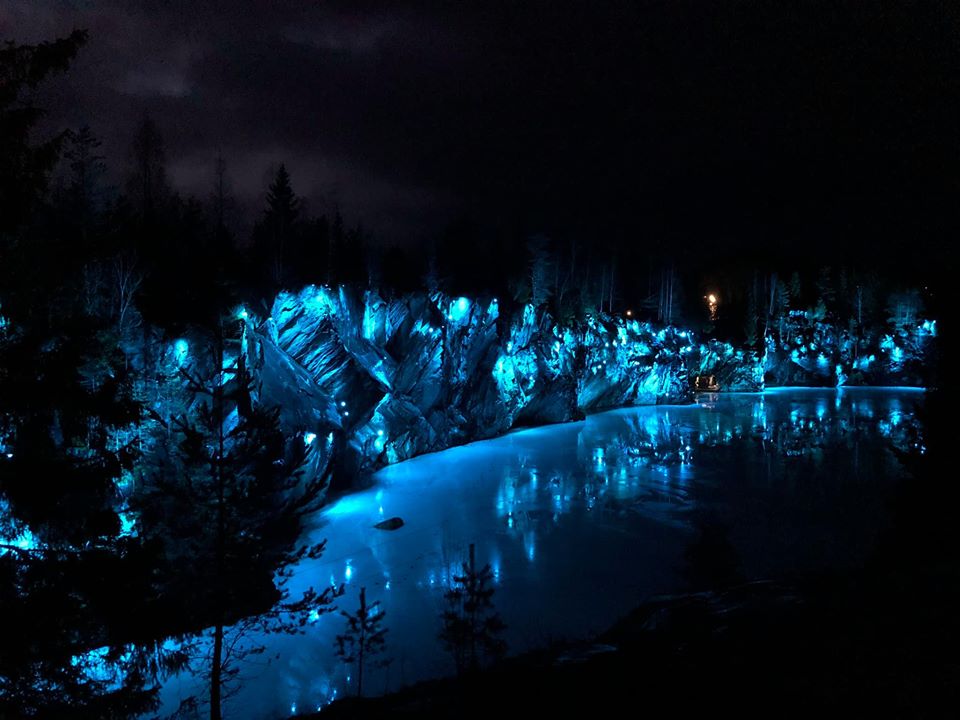
And if you're full of desire, have got necessary equipment and relevant experience, you can explore the underwater labyrinths of the quarry via scuba diving.
To sum up, this place is worthwhile and exciting! You will not regret visiting it!
Liinakhamari.
A small ice-covered boat rubbed its iron side against the snow-covered pier, while creaking quietly.
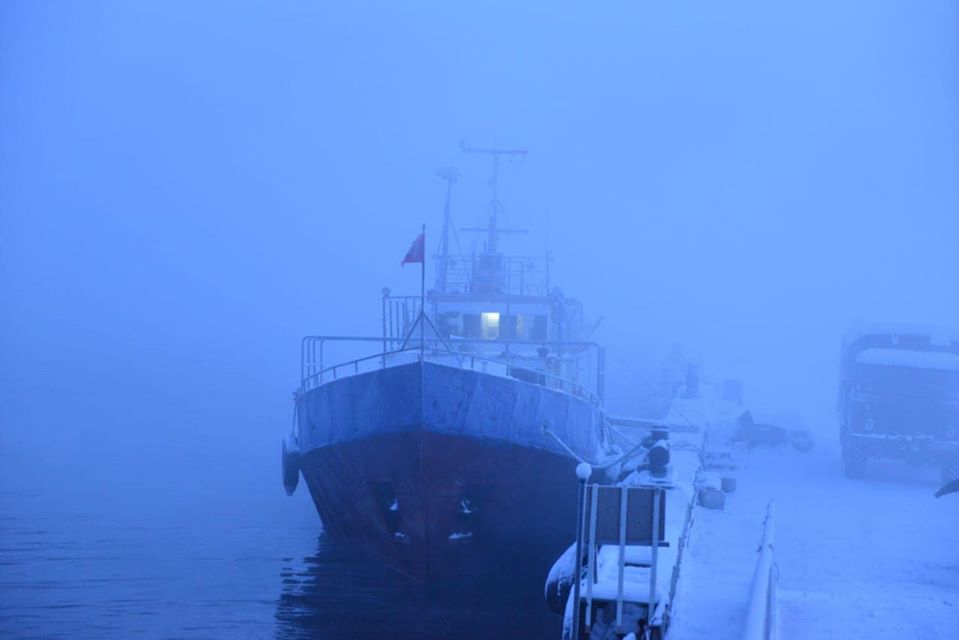
It's 10:30 a.m. It has just begun to dawn. The yellow numbers "-22°C" are displayed on the dashboard of my Hilux. And last night it was only -12°C! Much warmer. Yeah, I'm not lucky with the weather. It's a bit cold for scuba diving.

There is a thick fog over the bay (this is evaporation from the surface of the sea). And the water is covered with ripples. The sea soars like a huge pot in whichdemons boil sinners. And in an hour we are going to dive into it. Brrrr…
Usually the Barents Sea doesn't get covered with ice in winter, but right now ice has appeared in some spots near the shore, because the water temperature is very low: +2°C only.

It isn't a pleasure to install the equipment on the slippery icy deck of the ship. All belts got stiffened, carbines and cranes stopped working, fingers were frozen to the metal and we had to warm them by breathing from time to time. What's good is that there were not so many fans of winter diving in the warm Barents Sea, so I could comfortably change my clothes in a free small cabin in the ship.
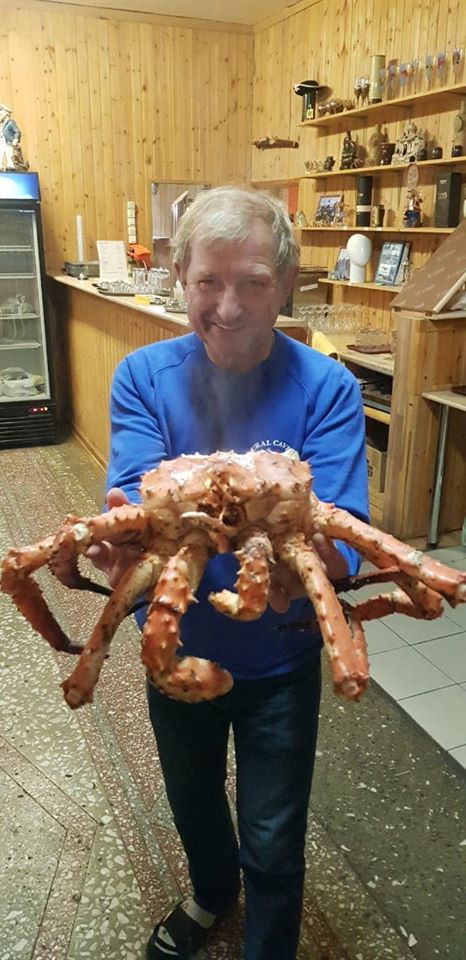
Our cruiser slowly set off from the pier and disappeared in the fog. I couldn't see further than 20 metres from myself. Almost immediately the coast disappeared from sight and we went into the thickest fog. We got ready and were waiting on the deck, freezing at the same time.
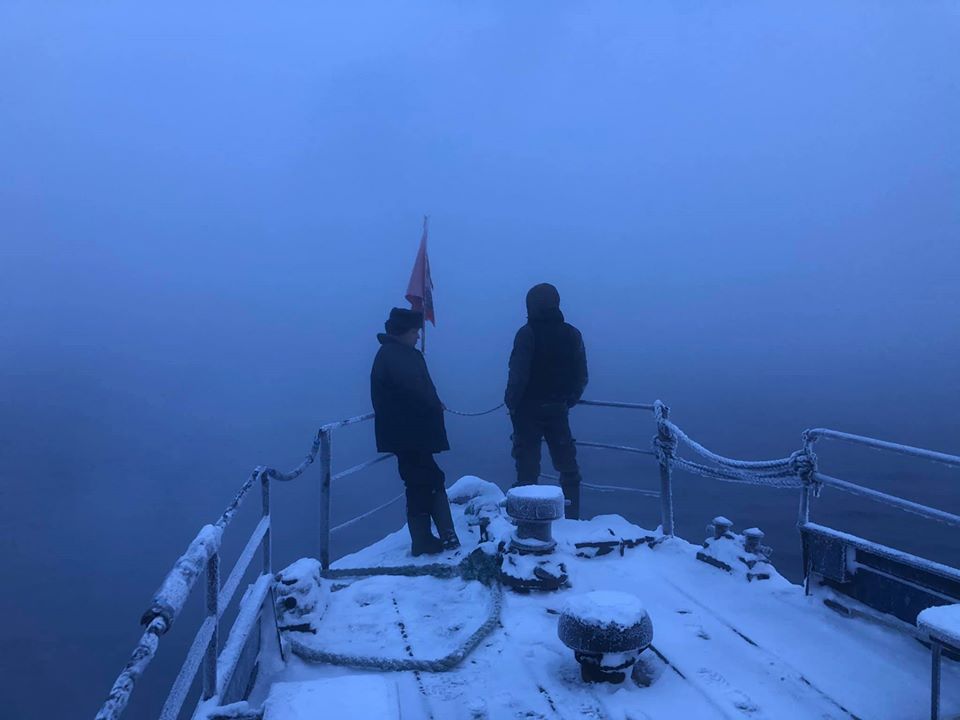
I was looking forward to diving because it was warmer in the water. About 25°C warmer than in the air.
At the signal of the captain Alexey Livans (who was also the owner of the DiverSea dive centre), we went from the side of the vessel into the dark abyss one by one. While the air from the BCD (buoyancy control device) and the dry suit was venting, I was slowly going down. The computer began to count metres of depth: five, ten, fifteen, twenty…
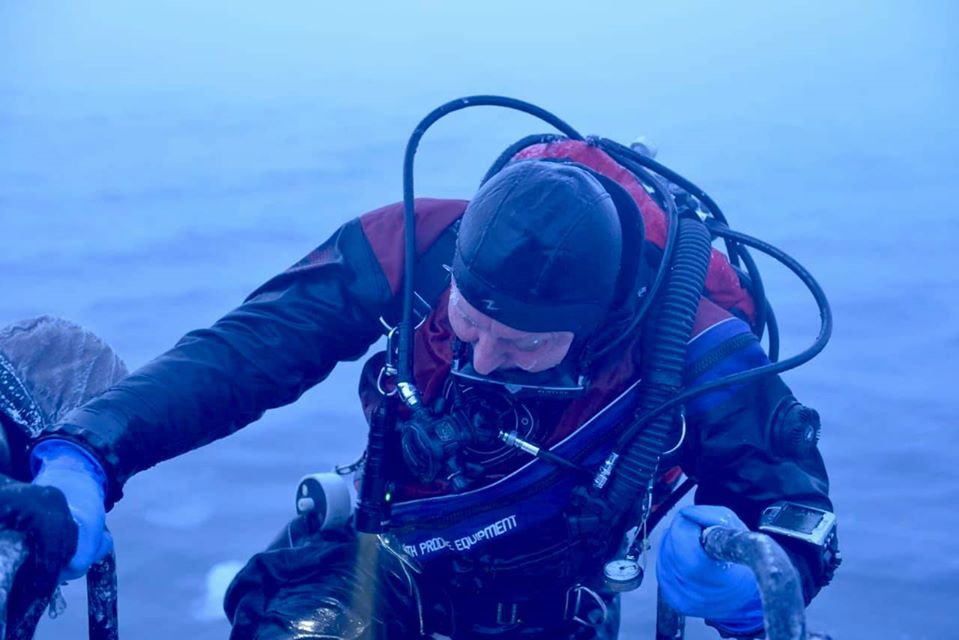
Visibility underwater was quite good to my surprise. You don't even need to turn on a flashlight in advance.
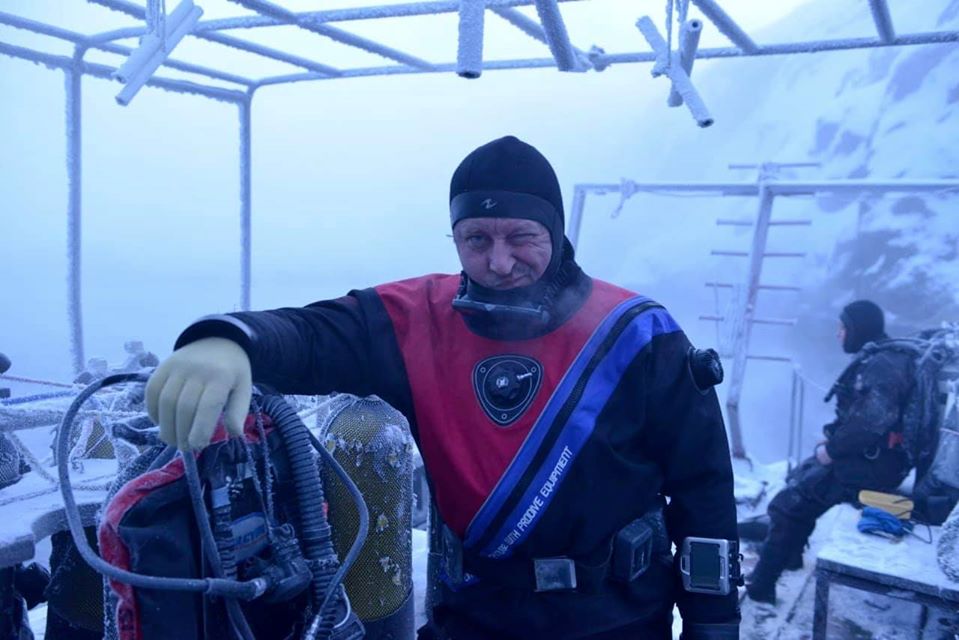
A minute after I began to dive, I felt that icy water was seeping slowly into my right side drop by drop.
"Damn it! That is the zipper", I thought. In spite of the fact I had checked my equipment twice, something went wrong.
Nevertheless, I decided to continue diving as long as I could tolerate the cold.
I had been diving for 40 minutes until it leaked completely. But when I came out of the depth, it got even worse. My face and scuba mask were covered with frost and my fingers were numb from the cold.
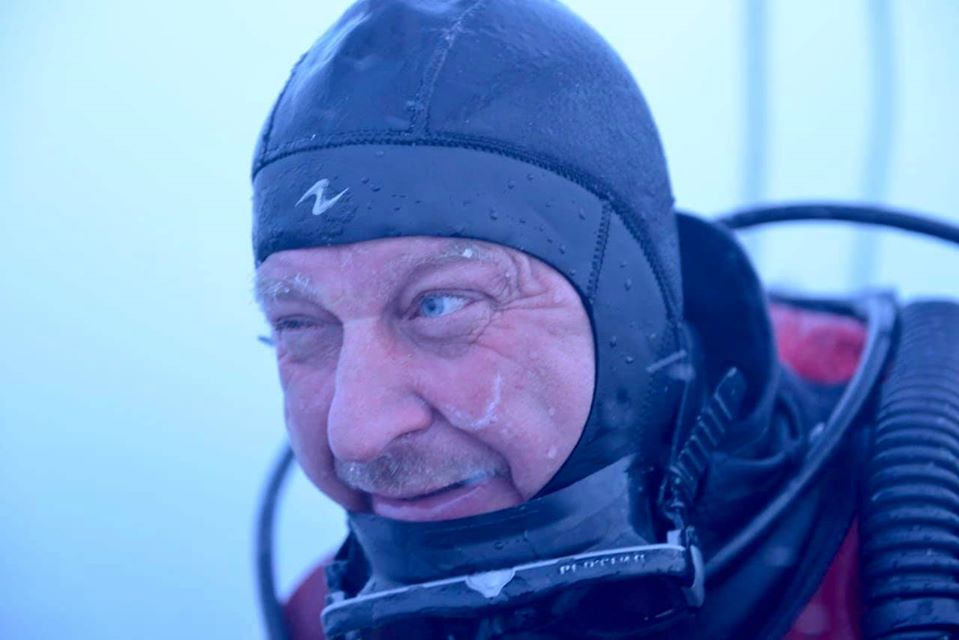
Ten minutes had passed before our schooner came out from the fog like a Flying Dutchman. But those 10 minutes felt like an eternity to me.
Liinakhamari → Nordkapp
The Barents Sea got completely frozen because at night it was -30°C. Our boat was stuck in the ice and that meant we couldn't go diving. Ice diving hadn't been planned that time, so we decided to take a ride to another interesting place.
The Nordkapp cape is the northernmost point of Europe, another "edge of the world". It is located 625 km from Liinakhamari. At the border with Norway the car was completely checked: all the luggage and all the glove compartments (they tried to find something even under the hood of the car). When we were crossing the Norwegian border, some products were confiscated: the import of yogurts and condensed milk is prohibited. But everyone was polite and fair so the work was done quickly and, all in all, it took us about an hour to pass both borders.
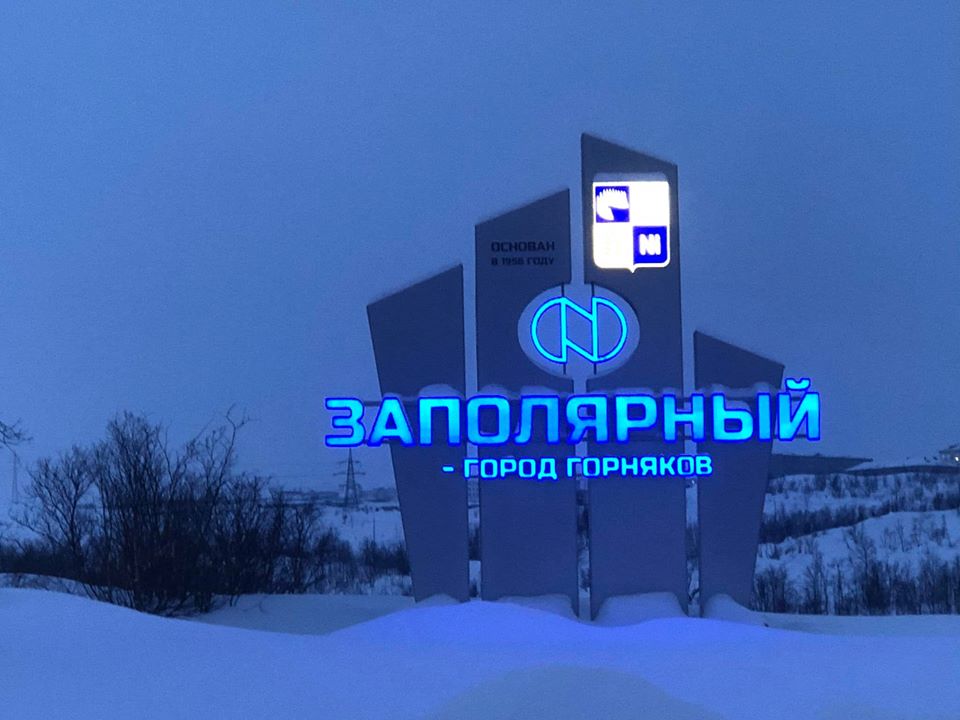
And now we're rolling west along the snow-covered Norwegian roads that loom along the rocky shores of the fjords and lead into the tundra like an arrow. The further we were going, the more snow was around us and the fewer people we saw.
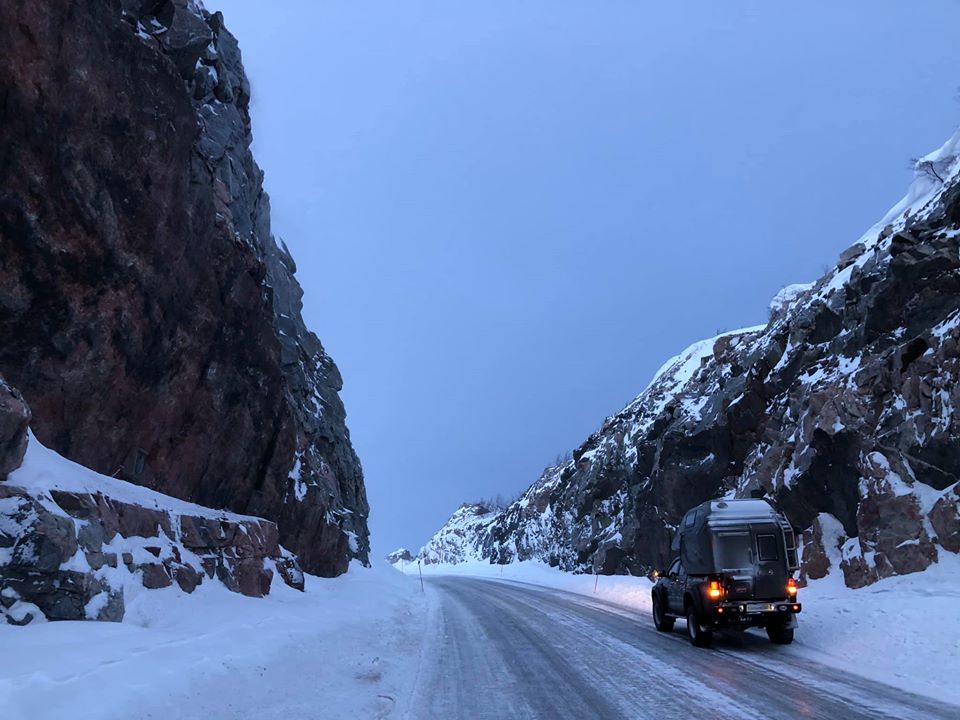
Only foxes and deer were roaming along the highway, sometimes going out on it. They are not afraid of cars and people, so you should be careful. The grey deer is scarcely visible at twilight. The polar day is short and the night comes after lunch so, unfortunately, most of the way we were passing in the darkness.
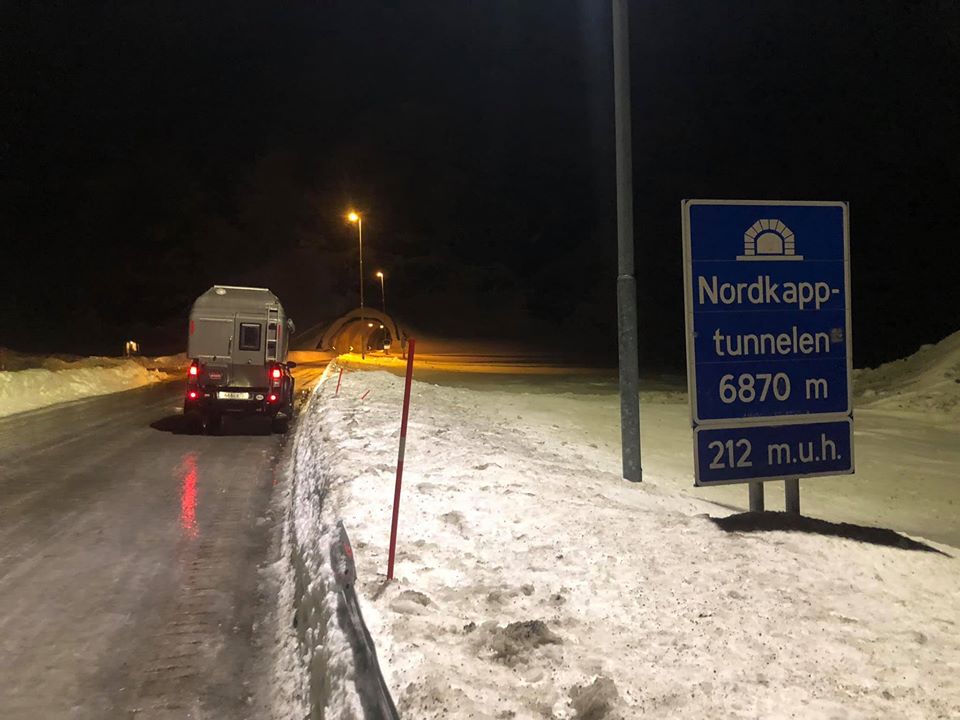
We had arrived in Kirkenes, a small port city, which is 10 km from the border, before it got dark. There was nothing much to see there. It's just a small town with a population of three and a half thousand people. There is a port, a Soviet War Memorial and a museum.
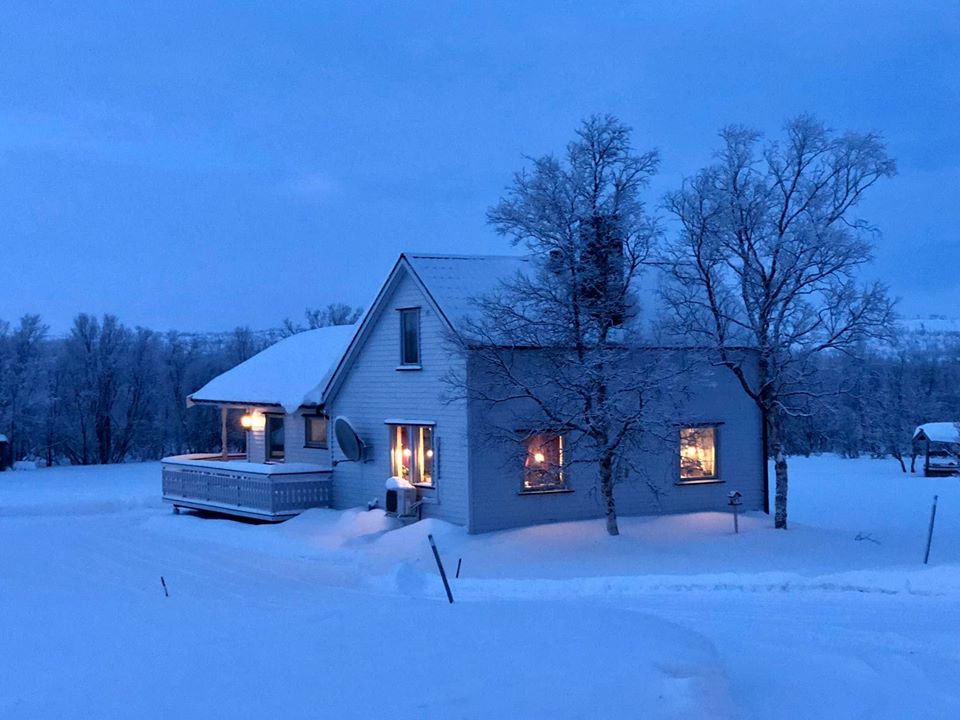
The roads in the northern part of Norway are good, but there is one difference from those we have. They are not processed with reagents and are not covered with sand. All they do is just remove the snow from roads with special equipment (both in cities and in the countryside).Therefore, the cars stay clean and the road is such a rolled snow surface that you can drive along it at a speed of 90…110 km/ h. On one hand, it seems good, but…

When there were 100 km left (from the final destination of our trip), the temperature rose to +2°С and it began to rain. Dropping on the snow surface of the track, the rain soon turned it into a real skating rink. My car almost went out of control and when I stopped and got out of it, I could barely keep on my feet.
The road was too icy.
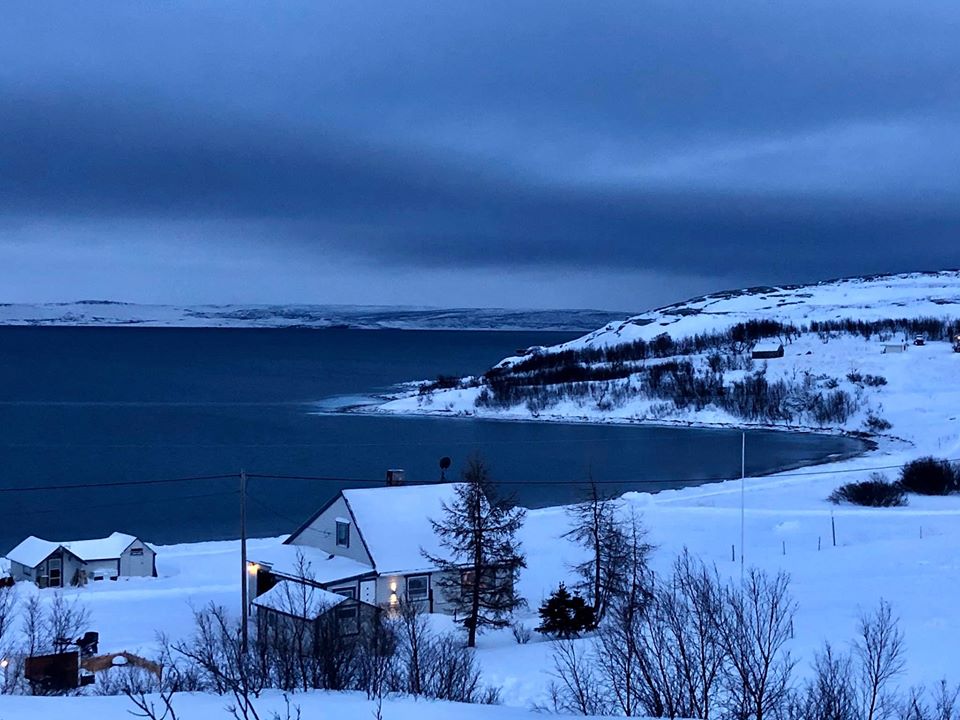
A few local cars were crawling on studded tires and trucks were just standing by the side of the road. A strong crosswind with rain and snow did not stop and turned into a real hurricane by midnight.
It took us more than two hours to overcome the last 60 km along the icy road with no traffic.

It wasn't easy to find a parking lot to make a stop for a night. The few campsites that we ran upon on our way were closed and the houses in them were snow-covered up to the roofs. The same situation was at all parking lots along the road. Finally, we have found a small platform where a snow-covered Audi with a camper trailer was parked (it had German license plate number).

Well, Nordkapp welcomed us in a quite unfriendly way!
Honningsvåg. Norway
The wind was in rage all night. It felt like the snowballs were knocking at the sides and the roof of our car house, trying to turn it over.
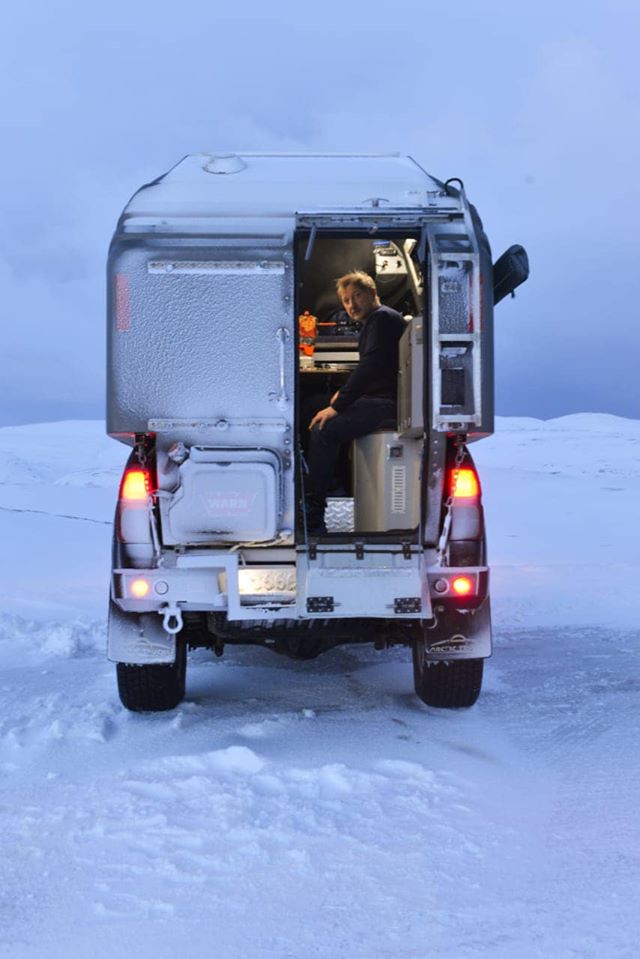
In the morning we went to the Nordkapp cape, which was only about 16 km away. Actually, you will not be able to reach the northernmost point of Europe on your own. There is a barrier 13 km from the cape, and all the people who are willing to go there have to gather at this place by 11 a.m. Then a large truck with a blade for cleaning the snow starts going at the head of the column and tries to pavethe way to the cape.
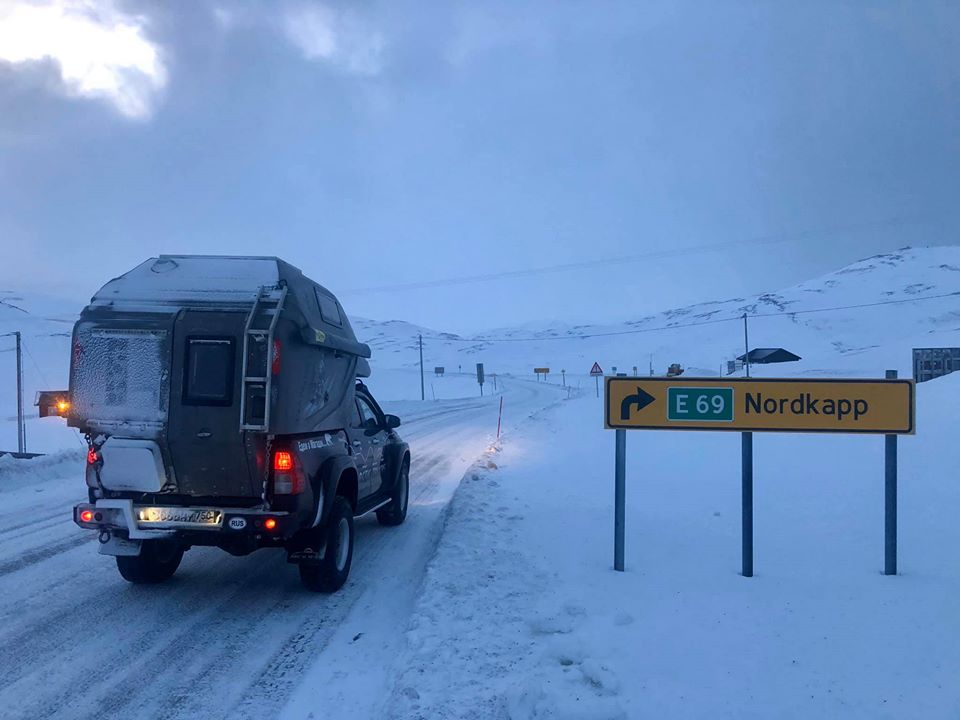
But this time there were such big snowdrifts that even the snowplow could not pass.
We decided to try again the next day and that day we went for a walk around the small fishing town Honningsvåg, which is 34 km from Nordkapp.

There we stayed overnight in a modest but not cheap inn.

In general, prices in Norway bite hard! I paid 18 crowns (126 roubles) for gasoline and 200 crowns (1400 roubles) for a burger and a cup of coffee at the petrol station. A double room in the modest hotel cost 920 crowns (6400 roubles).
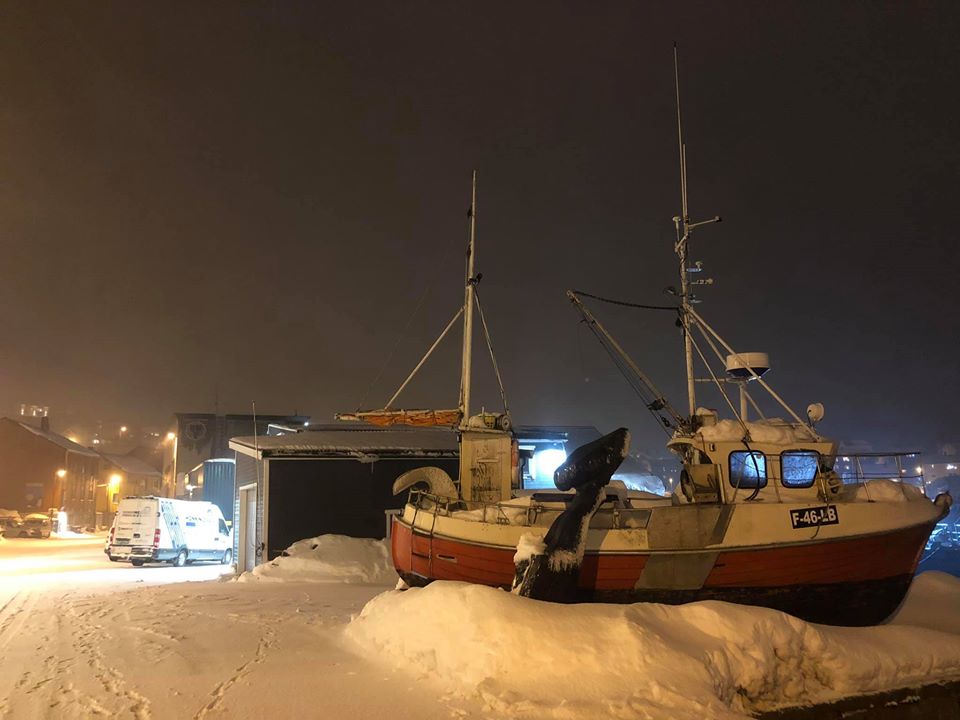
But the town itself is very cozy and beautiful. There are snow-covered streets, picturesque houses and lovely lanterns lit in the windows. Fishing boats swing on the waves in the bay, cars stay snow-covered and there are almost no people around.
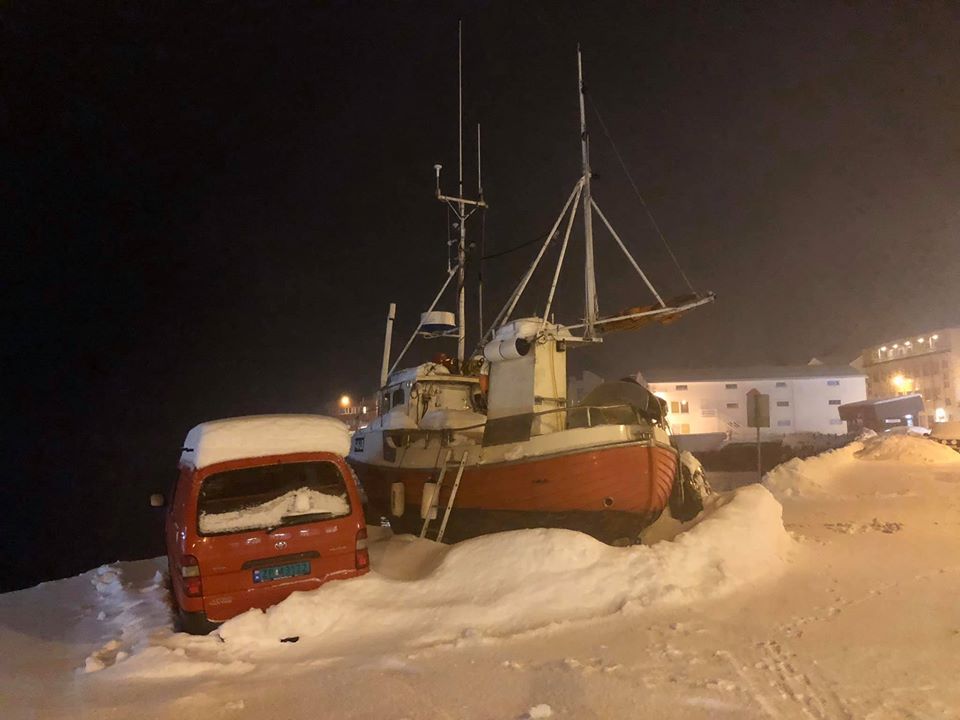
About two thousand people live in Honningsvåg and their main occupations are fishing and tourist business in summer. There is even a small airport. But in winter life is like temporarily suspended. The sea is stormy, it's cold, everything is covered in snow and there are not many tourists. Only some crazy explorers pave their way to the edge of the world in order to see this gloomy eternity of the cold Arctic Ocean from a high cliff.
It's the third day when a snow storm keeps raging in the island Magerøya (where the Nordkapp cape is located). The sea is stormy, therefore, even a large ferry could not leave the bay yesterday.
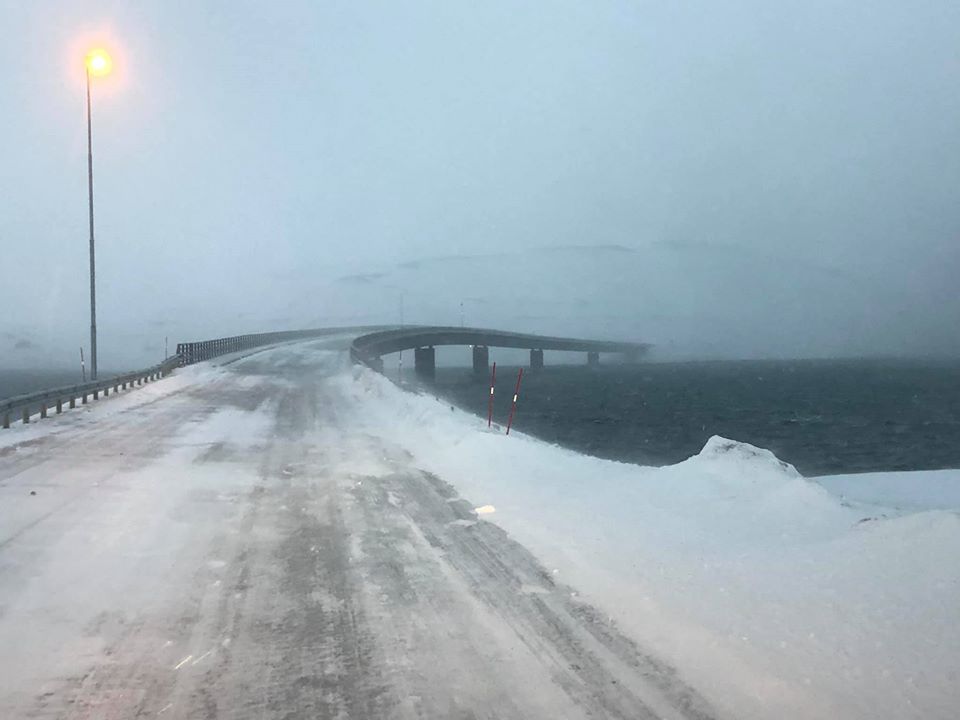
We realised that we had been trapped in this northern land of Norway. All the roads are closed and covered with snow.
After lunch we made an attempt to escape to the mainland despite the prohibition of the local emergency service and the storm warning.
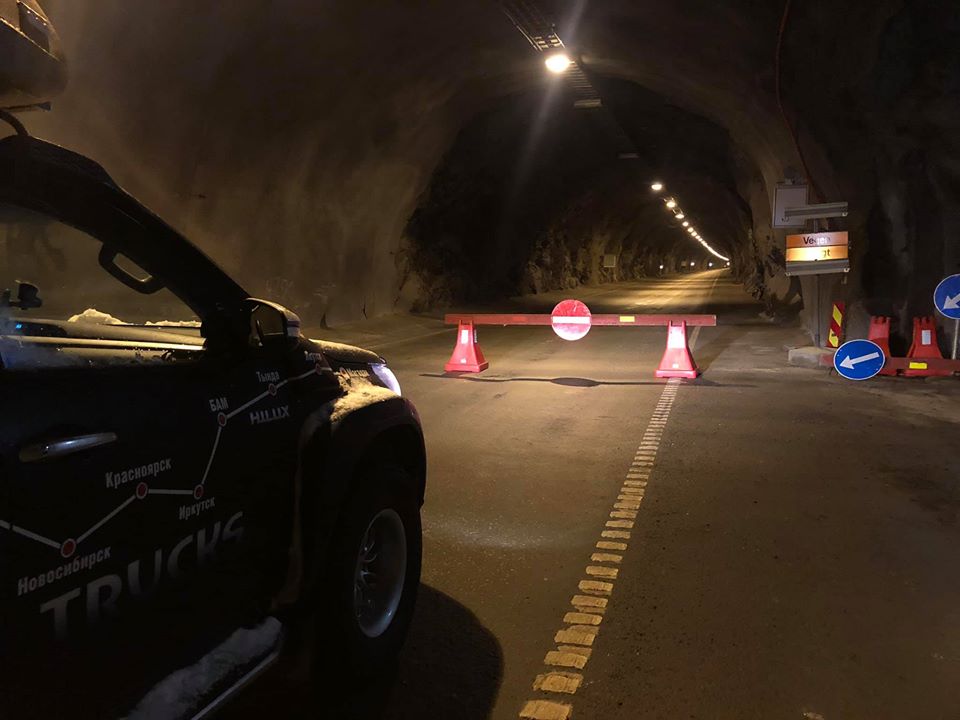
In the first tunnel the road was blocked by a forbidding sign on the counter but we were able to bypass it easily.
Actually,in some areas snow drifts had covered the road completely so we couldn't see further than 5 metres.
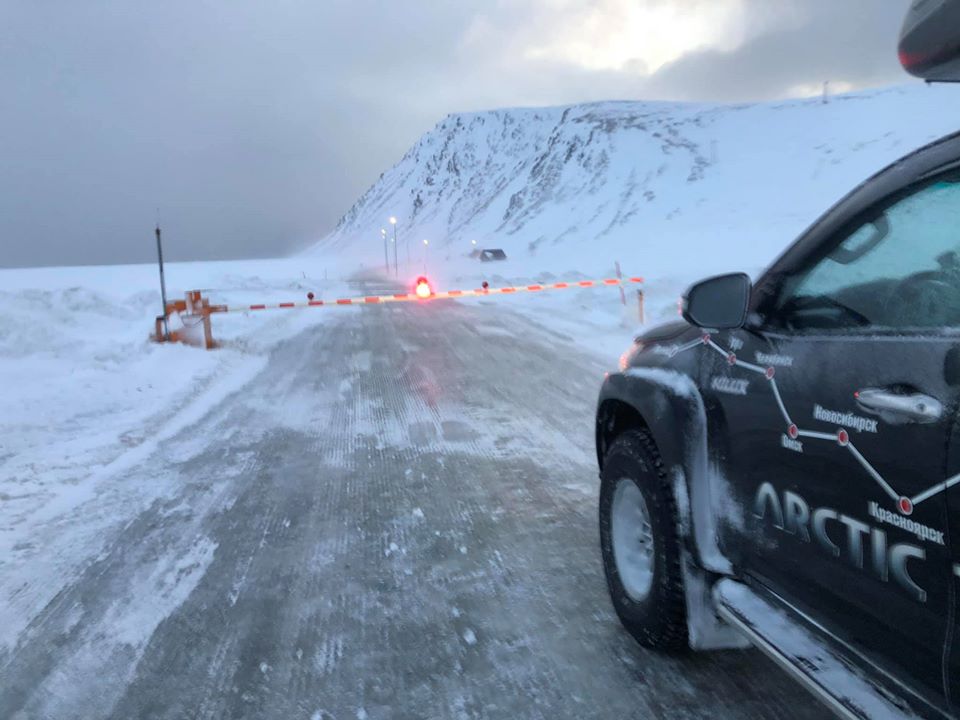
We passed another small tunnel and crossed a bridge. Nevertheless, in front of the main tunnel (which connects the island and the mainland) we ran into a barrier, which couldn't be bypassed. And the tunnel was also closed. We had to go back to Honningsvåg. On our way there and back, we haven't met a living soul.
The locals say that this is a common phenomenon in this area and such weather can last for a week or even more. We didn't foresee it, but now we have no choice. Let's monitor the weather forecast and hope for the best.
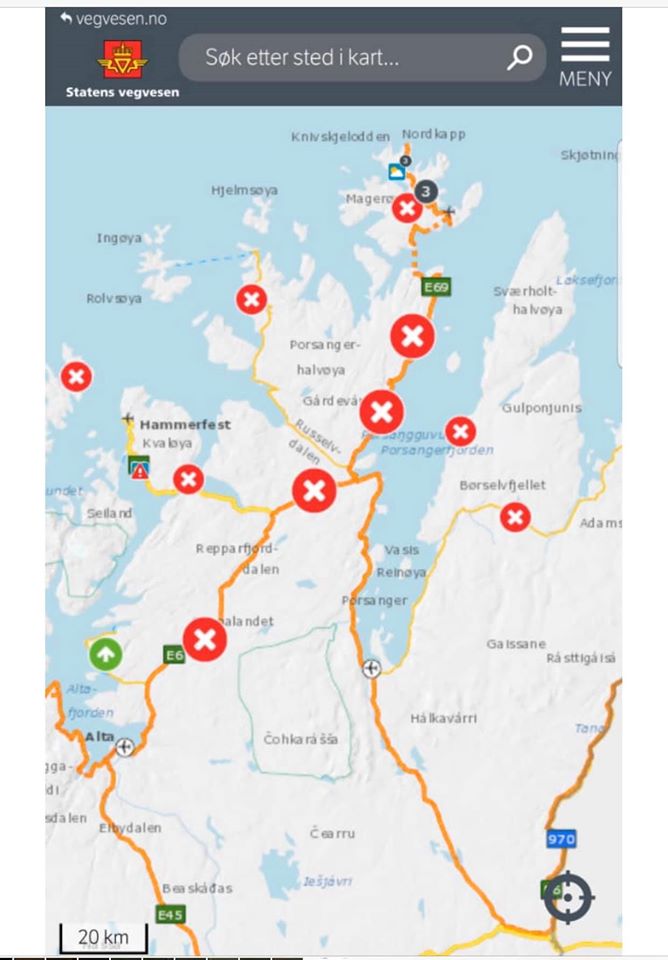
That's what an unpredictable location Nordkapp is like. The edge of the world, damn it.
 Cap-travel.ru
Cap-travel.ru